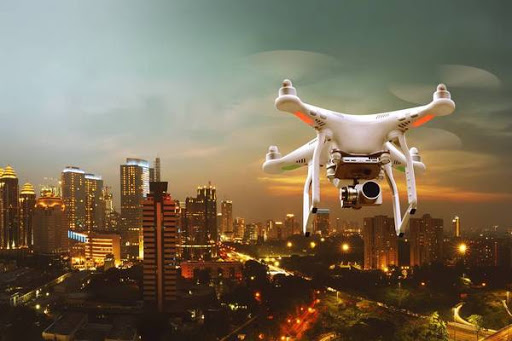
A Bionic Four-Winged Bird-Wing Helicopter Drone Will Bring Revolution
Advertisement
We have developed a four-winged bird-like robot, called a “bionic bird-wing helicopter”, that flies and lands by reverse-engineering the aerodynamics and biomechanics of swift hummingbirds and insects.
Or a bionic four-winged bird-wing helicopter drone will bring revolution.
Bird-wing helicopters have the potential to overtake and surpass the existing static wing or propeller drones.

Existing UAV configurations rely on propellers and static wings. A bird-wing helicopter flaps its wings to generate forward force. The complex relationship between aerodynamics and wing motion allows birds and insects to fly in ways that traditional drones cannot.
They can glide, hover, and perform aerobatics. They can either hover, like a conventional drone. They can descend slowly in narrow Spaces or fly up rapidly.
Current multi-rotor drones have excellent hovering capability, but it takes more power to fly forward than to hover, so they cannot fly extremely far. Fixed-wing drones can travel at high speeds, but often cannot hover without affecting the overall design. Hybrid concept aircraft, usually with wings and rotors. Hybrid aircraft perform worse in hover and cruise than other designed aircrafts, which cause the added weight of the parts.
Advertisement
Wing flapping is nature’s original solution for fast, slow flight and landing and taking off from anywhere. For birds or insects, each part of the system is used for circling and cruising flight without carrying extra thrusters or extra wings.
Existing fixed-wing and rotary-wing drones have been so widely used that designs are now approaching the limits of their efficiency. Any additional new parts can affect other aspects of performance.
In principle, bird-wing helicopters can perform more complex tasks than conventional aircraft, such as flying long distances, hovering at times, and manoeuvring in narrow spaces. Because wings are large and have a slow beat, and they are quieter and safer to use in human environments.
One of the main findings of our work is that the efficiency of conventional propeller-driven aircraft may be close to the limits of existing designs helicopters. Only by releasing some extra force can more advanced aircraft be built.
This shows that optimizing flight equipment is the key to make the new aircraft design feasible. We are now trying to copy nature’s wing design.
In some aspects, it’s not surprising that the design changes in the new system have led to such huge efficiency improvement. Winged creatures are optimized through hundreds of millions of years of evolution. We humans have been doing this for less than 200 years.
Advertisement
- Previous article
- Why do Fallen Leaves Make Rails Slippery?
- Next article
- How to Install Windows 95 With Minecraft
Advertisement
OTHER NEWS

Sleep well first: Sleep and weight loss
BY Helen

British experimental Nuclear Fusion Reactor successfully ignited
BY Helen

Apple VS Epic: The Reason for Their Lawsuit
BY Joyce

Why is milk in gallons but Coca-Cola is bottled in litres?
BY Sandra

Local News’ Transition to Paid Content In the Context of Layoffs, Mergers and Bankruptcies II
BY Jessica

How Does Game Industry Affect the Market?
BY Martha
RECENT NEWS
-

PUBG Mobile Esports Generated 200 Million Hours of Viewing in 2020
-

Mario Kart Tour Races to $200M revenue and 200M Downloads
-

Game Acquisitions Expand Globally in Q1 2021 with 280 Deals Worth $39 Billion Surpassing That in 2020
-

Free Fire Shows Strong Momentum, with Its Revenue Overtaking PUBG Mobile in a Single Market for Q1 2021
-

The Games Fund Launched a $50 Million Early Investment Fund to Invest in American and European Companies
-

How to Download and Install Wyze App for Free?
 1
1 1
1